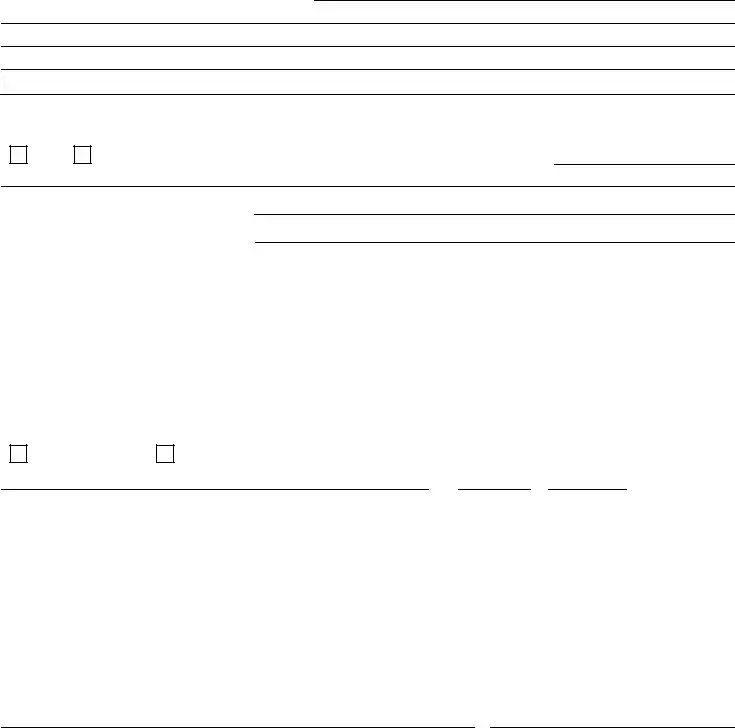555 Wright Way
Carson City, NV 89711
Reno/Sparks/Carson City (775) 684-4DMV (4368)
Las Vegas Area (702) 486-4DMV (4368)
Rural Nevada (877) 368-7828
Website: www.dmvnv.com
REPORT OF TRAFFIC ACCIDENT
(NRS 484.229, 484.236)
INSTRUCTIONS:
Pursuant to NRS 484.229, this SR-1 report needs to be completed within 10 days after an accident that occurred in the State of Nevada and was NOT investigated at the scene by law enforcement. Please complete ALL sections. This report cannot be accepted or processed unless ALL information has been completed for ALL DRIVERS AND VEHICLES that were involved in the accident.
THE FOLLOWING ATTACHMENTS MUST BE INCLUDED (this SR-1 report will be considered VOID if not attached):
(1)a copy of your insurance that was in effect on the date of the accident for the vehicle involved;
(2)an estimate of repairs or a statement of total loss if there was $750 or more in vehicle or property damage (of any one person); and
(3)a doctor’s statement of injury for each person injured in your vehicle (if the accident resulted in bodily injury or death).
Once completed, please sign your name on the second page, attach all required documents, and mail the complete report to the DMV at the above address. Only reports that have been properly completed for all drivers and vehicles, and include the required attachments, will be accepted and processed. Any SR-1 report that is incomplete or does not meet the requirements of NRS 484.229, as specified above, will not be retained by the Department. Failure to submit this report after it has been requested by the Department of Motor Vehicles may result in the suspension of your driving privilege for up to one year (per NRS 484.236).
ACCIDENT INFORMATION:
Date and time of accident:
DateDay of WeekTime
LOCATION WHERE THE ACCIDENT OCCURRED:
Highway No. or Street Name |
|
City |
|
County |
DRIVER AND VEHICLE INFORMATION:
If more than two vehicles were involved, please provide the additional driver and vehicle information on a separate page. NOTE: Plate number only will NOT be accepted.
|
No. 1 |
Driver |
Pedestrian |
Parked Vehicle |
Pedal Cyclist |
Other |
No. 2 |
Driver |
Pedestrian |
Parked Vehicle |
Pedal Cyclist |
Other |
|
1- |
2- |
3- |
4- |
5- |
1- |
2- |
3- |
4- |
5- |
|
|
|
|
|
|
|
|
|
|
|
|
|
Name (LAST, FIRST, MIDDLE) |
|
|
|
Name (LAST, FIRST, MIDDLE) |
|
|
|
|
|
|
|
|
|
|
|
|
|
|
|
Street Address |
|
City |
State |
Zip |
Street Address |
|
City |
State |
Zip |
|
|
|
|
|
|
|
|
|
|
|
|
|
|
Driver License No. and State |
|
Date of Birth (MM/DD/YYYY) |
Driver License No. and State |
Date of Birth (MM/DD/YYYY) |
|
|
|
|
|
|
|
|
|
License Plate No. and State |
Year and Make |
|
License Plate No. and State |
Year and Make |
|
|
|
|
|
|
|
|
|
|
|
|
|
|
|
|
Body Type |
|
|
Vehicle ID No. |
|
|
Body Type |
|
|
Vehicle ID No. |
|
|
|
|
|
|
|
|
|
|
|
|
|
|
|
OWNER’S INFORMATION: If the driver and owner of the vehicle are the same, please print “Same as Above.”


